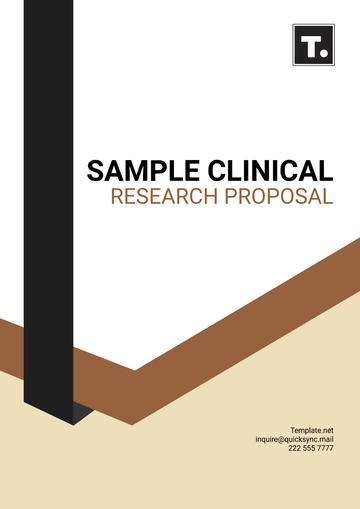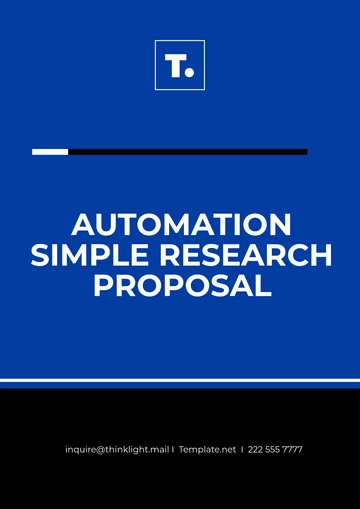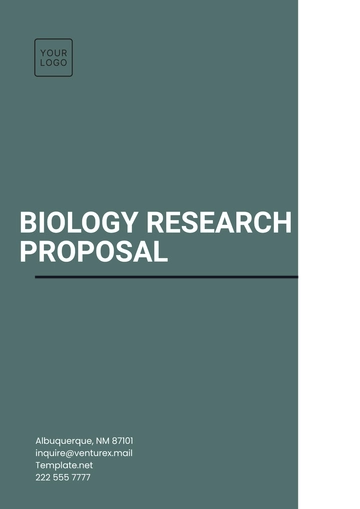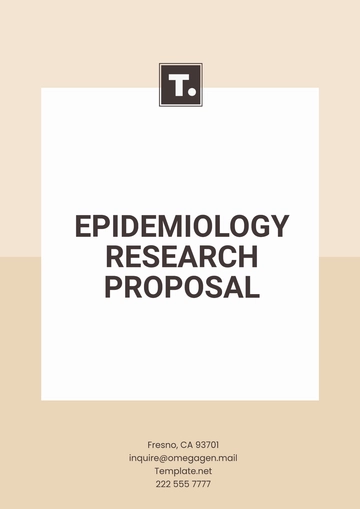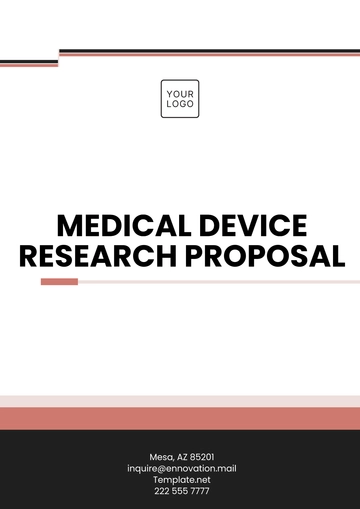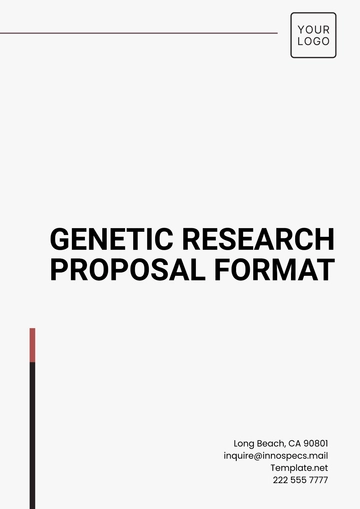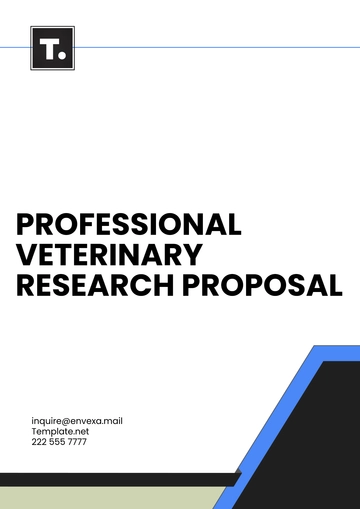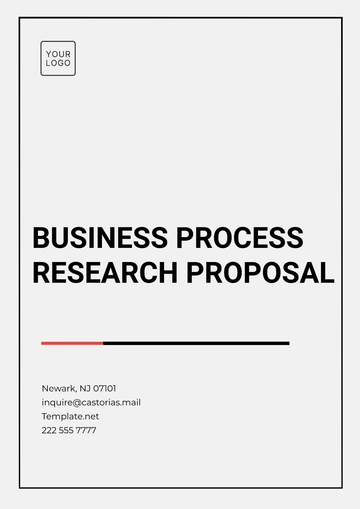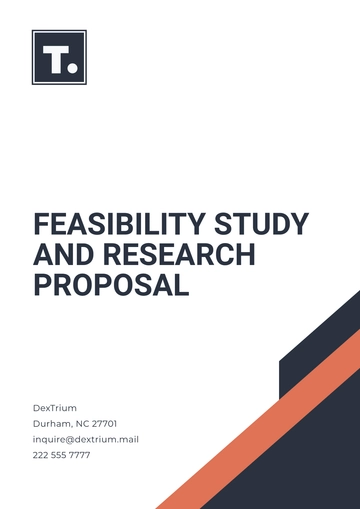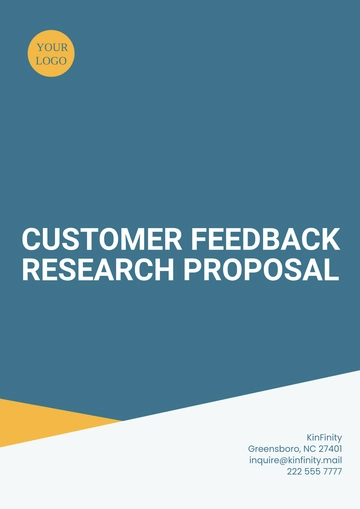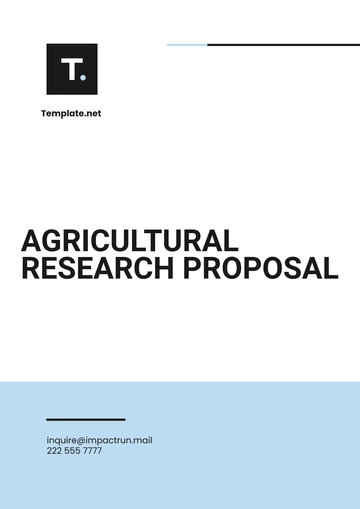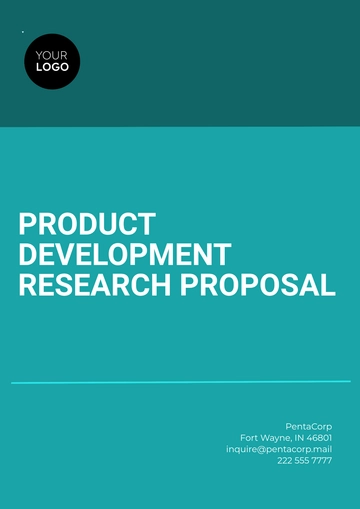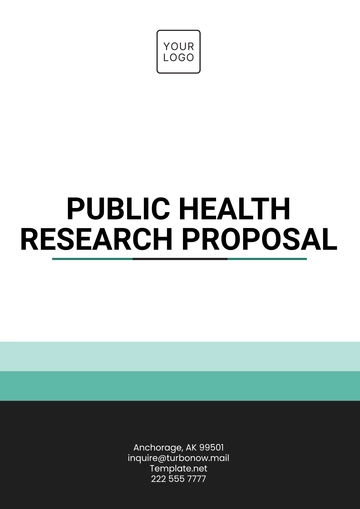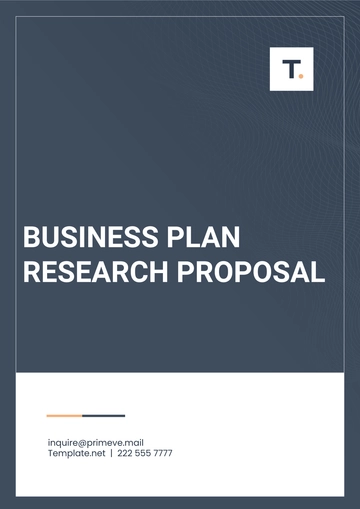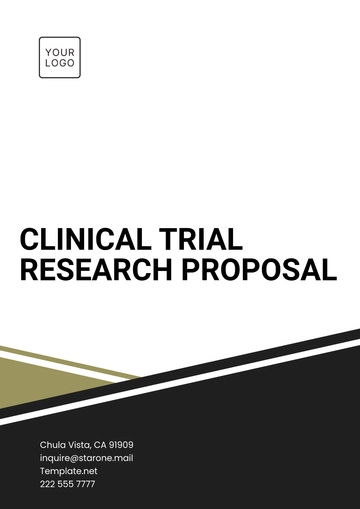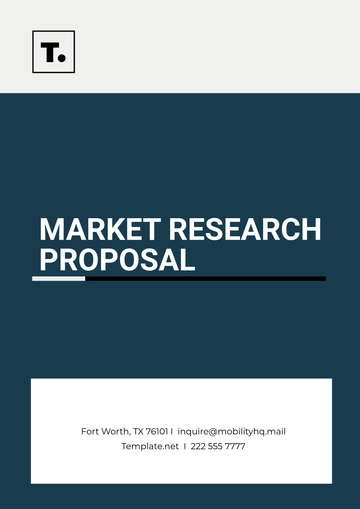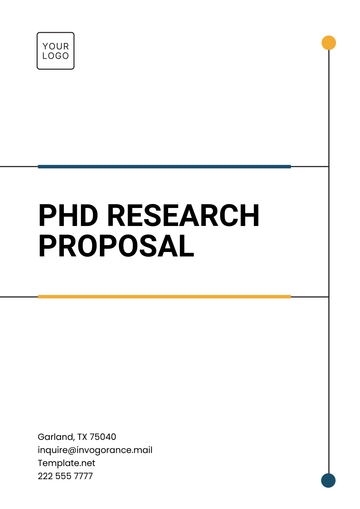Free Epidemiology Research Proposal
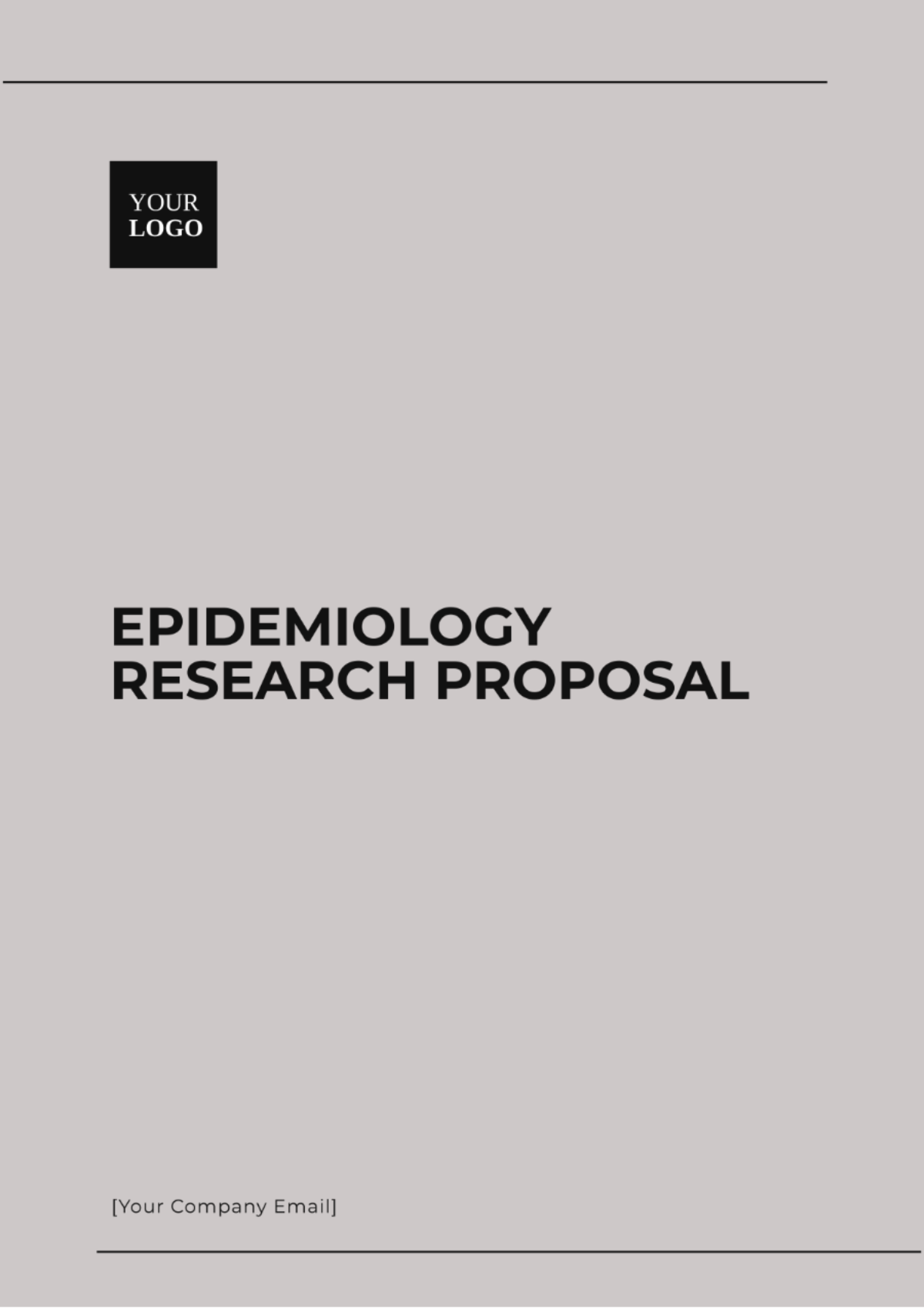
Prepared By: [YOUR NAME]
Date: [DATE]
I. Abstract
This research proposal seeks to examine the epidemiological factors influencing the incidence and prevalence of Type 2 Diabetes Mellitus (T2DM) across urban and rural settings. By conducting an in-depth analysis of demographic, behavioral, and socioeconomic variables, the study aims to uncover critical gaps in existing healthcare strategies. The ultimate goal is to identify targeted interventions to address the escalating trend of T2DM, thereby improving public health outcomes and informing more effective policy decisions.
II. Introduction
Type 2 Diabetes Mellitus (T2DM) is a chronic condition characterized by insulin resistance and hyperglycemia. The prevalence of T2DM has significantly increased worldwide, posing substantial public health challenges. Understanding the epidemiology of T2DM is crucial to developing effective public health interventions. This study aims to explore the epidemiological determinants of T2DM in both urban and rural contexts, emphasizing variations due to lifestyle, access to healthcare, diet, and socioeconomic factors.
A. Significance
Identifying determinants of T2DM can inform targeted prevention strategies and improve health outcomes. The study's findings could be instrumental in guiding policy decisions and resource allocation to better manage and prevent T2DM.
B. Objectives
To evaluate the prevalence of Type 2 Diabetes Mellitus (T2DM) in urban and rural populations: Determine how the rate of T2DM varies between urban and rural areas, identifying any significant differences.
To assess the influence of lifestyle factors on T2DM incidence: Investigate how variables such as diet, physical activity, and other lifestyle choices contribute to the development of T2DM.
To analyze the impact of socioeconomic status on T2DM prevalence: Examine how factors such as income, education, and employment affect the prevalence and management of T2DM.
To develop targeted interventions for high-risk groups: Formulate and recommend specific strategies and programs aimed at reducing T2DM incidence and improving health outcomes for populations identified as high-risk.
III. Literature Review
Existing research indicates a growing prevalence of T2DM globally, with significant disparities between urban and rural populations. Urbanization, lifestyle changes, and genetic predispositions are frequently cited contributors. However, gaps remain in understanding the relative impact of these factors across different demographics. This study seeks to fill these gaps by providing a nuanced analysis of T2DM determinants and their interactions.
IV. Methodology
A. Study Design
This research project includes a cross-sectional study that combines both quantitative and qualitative methods to gather extensive data from populations in various urban and rural locations, aiming to obtain detailed and diverse information for an in-depth analysis.
B. Data Collection
Sample Population: Adults aged 30-60 years from strategically selected urban and rural regions. This age range is chosen to capture individuals who are at higher risk for Type 2 Diabetes Mellitus (T2DM) and to ensure a comprehensive understanding of the condition across different life stages.
Data Sources: Data will be collected through a combination of methods to ensure a robust and multi-faceted approach:
Surveys: Structured questionnaires to gather quantitative data on lifestyle, health behaviors, and demographic information.
Medical Records: Review of health records to obtain objective data on T2DM incidence, diagnostic history, and treatment outcomes.
Focus Groups: Qualitative discussions with participants to gain deeper insights into personal experiences, attitudes, and perceptions related to T2DM.
Variables: Key variables to be examined include:
Demographic Information: Age, gender, location (urban/rural).
Body Mass Index (BMI): A measure of body fat based on height and weight.
Physical Activity: Frequency, intensity, and type of physical exercise.
Dietary Habits: Nutritional intake and dietary patterns.
Socioeconomic Status: Income level, education, and occupation.
Healthcare Access: Availability and utilization of healthcare services, including preventive care and treatment options.
C. Analysis Methods
Data will be analyzed using statistical software (e.g., SPSS) to identify correlations and trends. Multivariate regression models will assess the impact of different variables on T2DM prevalence.
V. Ethical Considerations
This study will adhere to ethical guidelines to ensure the confidentiality and consent of all participants. Ethical approval will be sought from the relevant Institutional Review Boards (IRBs).
Informed Consent: Participants will be fully informed about the study's objectives, procedures, and potential risks.
Confidentiality: Data will be anonymized and stored securely to protect participant privacy.
VI. Budget
The estimated budget for this study is as follows:
Item | Cost (USD) |
|---|---|
Personnel | 50,000 |
Data Collection Tools | 20,000 |
Data Analysis Software | 10,000 |
Travel | 15,000 |
Miscellaneous | 5,000 |
Total | 100,000 |
VII. Timeline
The estimated timeline for the study is as follows:
Milestone | Deadline |
|---|---|
Ethical Approval | Month 1 |
Data Collection Setup | Month 2-3 |
Data Collection | Month 4-8 |
Data Analysis | Month 9-11 |
Final Report | Month 12 |
VIII. References
American Diabetes Association. (2050). Standards of Medical Care in Diabetes—2020. Diabetes Care, 43(Supplement 1), S14-S31.
Hu, F. B., Manson, J. E., Stampfer, M. J., Colditz, G., Liu, S., Solomon, C. G., & Willett, W. C. (2051). Diet, lifestyle, and the risk of type 2 diabetes mellitus in women. The New England Journal of Medicine, 345(11), 790-797.
Zimmet, P., Alberti, K. G., & Shaw, J. (2051). Global and societal implications of the diabetes epidemic. Nature, 414(6865), 782-787.
- 100% Customizable, free editor
- Access 1 Million+ Templates, photo’s & graphics
- Download or share as a template
- Click and replace photos, graphics, text, backgrounds
- Resize, crop, AI write & more
- Access advanced editor
Study disease patterns with our Epidemiology Research Proposal Template from Template.net. This editable and customizable template is crafted to help you present your research objectives, methods, and expected outcomes in the field of epidemiology. Editable in our AI Editor Tool, it offers you the flexibility to modify the content to align with your specific research goals.
You may also like
- Business Proposal
- Research Proposal
- Proposal Request
- Project Proposal
- Grant Proposal
- Photography Proposal
- Job Proposal
- Budget Proposal
- Marketing Proposal
- Branding Proposal
- Advertising Proposal
- Sales Proposal
- Startup Proposal
- Event Proposal
- Creative Proposal
- Restaurant Proposal
- Blank Proposal
- One Page Proposal
- Proposal Report
- IT Proposal
- Non Profit Proposal
- Training Proposal
- Construction Proposal
- School Proposal
- Cleaning Proposal
- Contract Proposal
- HR Proposal
- Travel Agency Proposal
- Small Business Proposal
- Investment Proposal
- Bid Proposal
- Retail Business Proposal
- Sponsorship Proposal
- Academic Proposal
- Partnership Proposal
- Work Proposal
- Agency Proposal
- University Proposal
- Accounting Proposal
- Real Estate Proposal
- Hotel Proposal
- Product Proposal
- Advertising Agency Proposal
- Development Proposal
- Loan Proposal
- Website Proposal
- Nursing Home Proposal
- Financial Proposal
- Salon Proposal
- Freelancer Proposal
- Funding Proposal
- Work from Home Proposal
- Company Proposal
- Consulting Proposal
- Educational Proposal
- Construction Bid Proposal
- Interior Design Proposal
- New Product Proposal
- Sports Proposal
- Corporate Proposal
- Food Proposal
- Property Proposal
- Maintenance Proposal
- Purchase Proposal
- Rental Proposal
- Recruitment Proposal
- Social Media Proposal
- Travel Proposal
- Trip Proposal
- Software Proposal
- Conference Proposal
- Graphic Design Proposal
- Law Firm Proposal
- Medical Proposal
- Music Proposal
- Pricing Proposal
- SEO Proposal
- Strategy Proposal
- Technical Proposal
- Coaching Proposal
- Ecommerce Proposal
- Fundraising Proposal
- Landscaping Proposal
- Charity Proposal
- Contractor Proposal
- Exhibition Proposal
- Art Proposal
- Mobile Proposal
- Equipment Proposal
- Student Proposal
- Engineering Proposal
- Business Proposal
